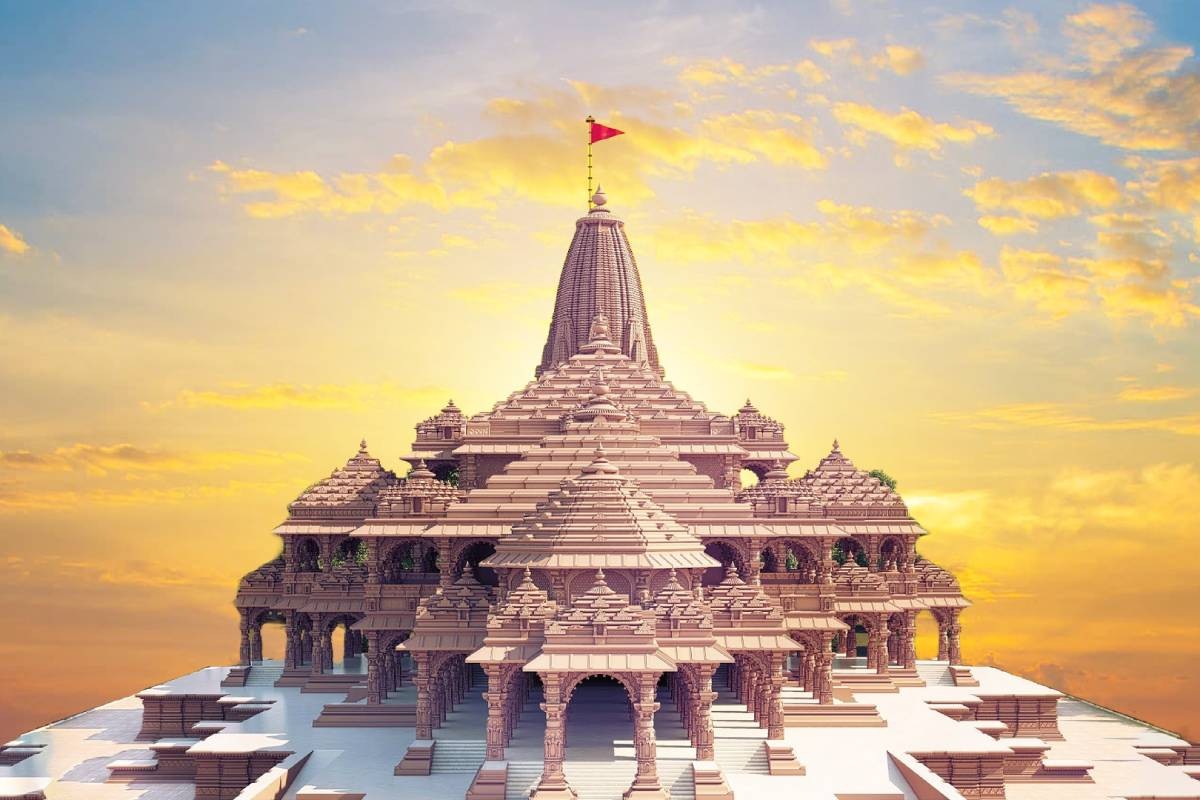Ram Temple: A new-age Architectural Marvel
Syllabus: GS1/Art and Culture Context:
? The Pran Pratishtha (consecration) ceremony of the Ram Lalla idol took place at Ram Temple in Ayodhya, Uttar Pradesh on January 22, 2024.
? The temple is a new-age architectural marvel of elegant sandstones with no use of iron or steel.
Key Facts about the Temple
? It is spread over nearly 3 hectares and is made with pink sandstone and adorned with intricate carvings.
? The temple blends traditional design with cutting-edge technology and is crafted without the use of iron, steel, or cement.
? The idol of Lord Ram inside the sanctum sanctorum (also known as Grabhgriha) of the temple; The statue was carved in black stone by sculptor Arun Yogiraj.
Construction Materials:
? Traditional construction materials have been used in their construction to reflect an alignment with traditional building practices along with an emphasis on sustainability.
? These include:
-Bansi Paharpur
-Pink Sandstone from Bharatpur of Rajasthan (for the main temple structure);
? Granite Stones have been used in the plinths
? White Makrana and Colored Marbles have been used for the inlay work
? Teakwood has been used for the construction of the doors of the temple.
? Special Bricks with ‘Shri Ram’ inscribed: It intertwines modern craftsmanship with ancient symbolism.
? Other Materials Used: Shaligram Rock, Copper Plates, Gold, and Ashtdhatu
Architectural Highlights:
? Foundation: A 14-meter thick layer of roller-compacted concrete, looking like an artificial rock, has been used to construct the foundation of the temple.
? A 21-foot-high plinth of Granite has been constructed for protection against ground moisture.
? The Main Temple: The main temple is built in Nagara Style.
It consists of a total of five Mandaps (Hall) – Nritya Mandap, Rang Mandap, Sabha Mandap, Prarthna, and Kirtan Mandaps.
? It has three stories (ground plus two floors, with each story designed to give the devotees an experience of the various stages of Lord Rama’s divine journey, each floor of the temple will be 20 feet high), and 392 pillars.
? The main entrance to the temple is called the Singh Dwar, which features a series of ornate statues of elephants, lions, Lord Hanuman, and Garuda.
Unique Feature:
? Around the grand temple is a rectangular periphery called Percota, a feature found in temples in south India, but not generally in north India.
? About 70% of the complex will be a green area.
? The temple complex has two sewage treatment plants, a water treatment plant, and a dedicated electricity line from the powerhouse.
? A Pilgrims Facility Centre of 25,000 capacity to provide medical facilities and locker facilities to the pilgrims.
Other Architectural Facets:
? A time capsule has been placed approximately 2,000 feet below the ground, right underneath the temple. The capsule contains a copper plate inscribed with relevant information regarding the Ram Mandir, Lord Rama, and Ayodhya.
? The purpose of this time capsule is to ensure that the identity of the temple remains intact over time so that it doesn’t get forgotten in the future.
? The temple is an earthquake-resistant structure, with an estimated age of 2500 years.






.jpg)
.jpg)
.jpg)





